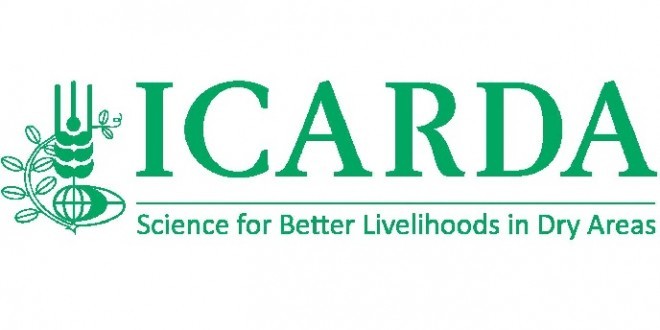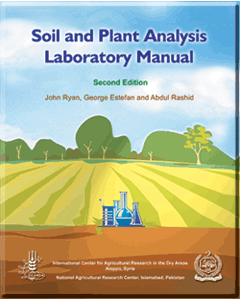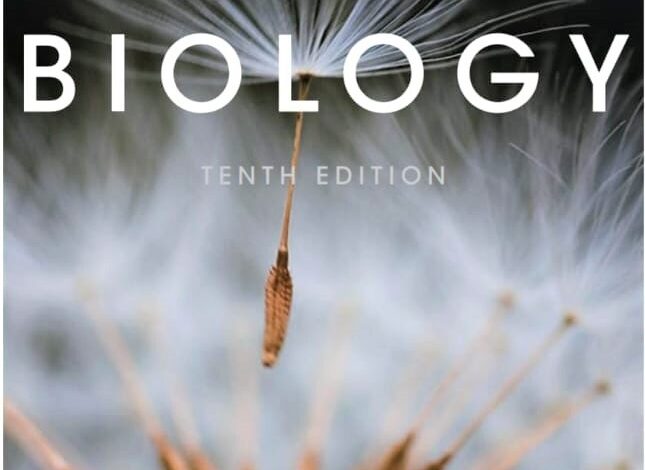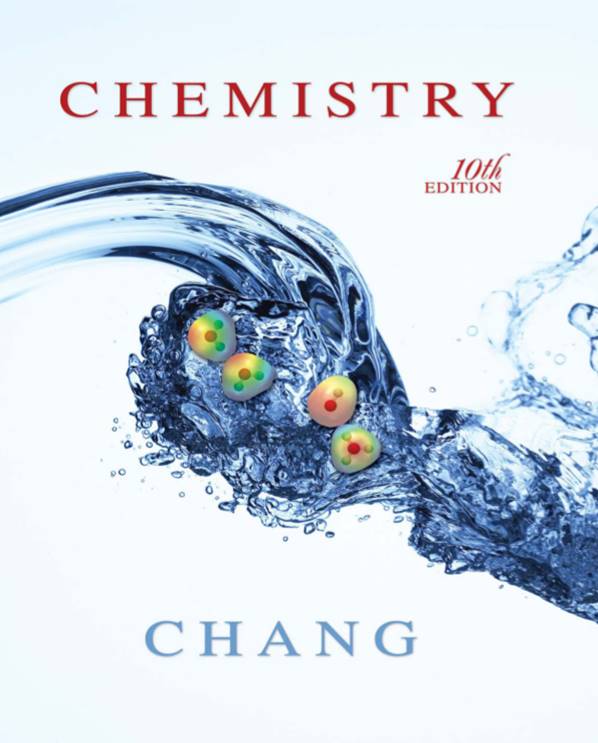
Ebook Of Analysis Methode: Handbook Of International Center for Agricultural Research in the Dry Areas (ICARDA)

(Picture from http://www.icarda.org)
The idea that one could test or analyze a soil and obtain some information about its properties especially its acidity or alkalinity and its nutrient status is long established, and can be traced back to the beginning of scientific inquiry about the nature of soil. Analysis of plant to reflect fertility status of the soil in which it grew is more recent, although visual crop observations are as old as the ancient Greeks, if not older. In the last few decades, spurred on by commercialization of agriculture and the demands for increased output from limited and even diminishing land resources, both soil and plant analysis procedures have been developed, and are still evolving. With the advent of chemical fertilizers, the need to know nutrient status of a soil in order to use these expensive and limited inputs more effectively became all the more crucial. However, if soil testing is to be an effective means of evaluating fertility status of soils, correct methodology is absolutely essential. A soil or a field may be assessed for its capability of providing a crop with essential nutrients in several ways:
- Field Plot Fertilizer Trials;
- Greenhouse Pot Experiments;
- Crop Deficiency Symptoms;
- Plant Analysis;
- Rapid Tissue or Sap Analysis;
- Biological Tests, such as Growing Microorganisms; and
- Soil Testing prior to Cropping
While all approaches can be used in research, the latter one is most amenable, and one upon which recommendations for farmers can be based. On the other hand, plant analysis is a postmortem approach and one that should be interpreted in the light of soil test results. Soil testing is now an intrinsic part of modern farming in the West. Tests primarily focus on the elements in most demand by crops which are supplied by fertilizers: nitrogen (N), phosphorus (P), and potassium (K). Depending upon the soil types, in some regions tests are also conducted for secondary nutrients: calcium (Ca), magnesium (Mg), and sulfur (S). In drier areas, micronutrients such as iron (Fe), zinc (Zn), manganese (Mn), copper (Cu), and boron (B) are often measured, since deficiencies of these elements are more frequently associated with calcareous soils. Indeed such areas may also have excessive or toxic levels of some elements, like B and Sodium (Na).
As nutrient behavior in soils is governed by soil properties and environmental conditions, measurement of such properties is often required. These include pH, salinity, organic matter (OM), calcium carbonate (CaCO3), and texture. In drier areas, the presence of gypsum (CaSO4.2H2O) is also of concern.
Soil testing involves four distinct phases:
- Sample Collection: This should be such that it reliably reflects the average status of a field for the parameter considered.
- Extraction or Digestion and Nutrient Determination: The reagent used and the procedures adopted should quantify all or a portion of the element in the soil which is related to the availability to the plant, i.e., it should be correlat ed with plant growth.
- Interpreting the Analytical Results: The units of measurement should reliably indicate if a nutrient is deficient, adequate, or in excess.
- Fertilizer Recommendation: This is based upon the soil test calibrated for field conditions, and considers other factors such as yield target, crop nutrient requirement, management of the crop, soil type, and method of fertilizer application,
Central to the Network, and indeed ICARDA’s operations, has been its Soil Plant Analysis Laboratory. Though its facilities have been designed and developed without some of the constraints experienced by other governmental and educational laboratories in the region, some of the procedures adapted by the laboratory are based on validated regional research, e.g., N and P. A key element in any worthwhile laboratory is a list of appropriate tests pre- sented in such a manner that it can be readily followed routinely by those who actually do soil testing and plant analysis, i.e., the laboratory technicians. Therefore, the target audience for this manual is the cadre of technical staff throughout the region.
A brief introduction to each test is given, so that the technician should have an elementary understanding of the importance of the work he/she is doing. He/she should also know the range of values to be expected for soils and plants in the region, and therefore more readily identify gross errors. We have attempted to select the most appropriate method for each test and present it in a clear, stepwise manner.While the manual primarily deals with soil testing, a number of important plant tests are presented, since they may complement the soil tests and are frequently needed for soil fertility and plant nutrition studies. Similarly, due emphasis has been given to physical properties; describing the tests routinely done along with chemical analysis. The importance of proper soil and plant sampling has been highlighted, and guidelines of sample collection, processing, and storage provided.We have also presented material on laboratory organization and safety aspects which are often overlooked by technical staff, but which impinge greatly on their work output and its reliability. Additionally, the appendices contain very useful information on related practiced aspects like abbreviations, conversion factors, atomic weights, solution concentrations, pH effect on soil conditions, summarized soil test methodologies, plant sampling guidelines, criteria for interpreting soil and plant analysis data, soil salinity, and boron toxicity interpretations.
Review By ICARDA



Greetings I am so thrilled I found your webpage, I really found you by error, while I was searching on Bing for something else, Nonetheless I am here now and would just like to say thanks for a fantastic post and a all round entertaining blog (I also love the theme/design), I don’t have time to browse it all at the moment but I have bookmarked it and also added in your RSS feeds, so when I have time I will be back to read much more, Please do keep up the great work.
WONDERFUL Post.thanks for share..more wait .. …